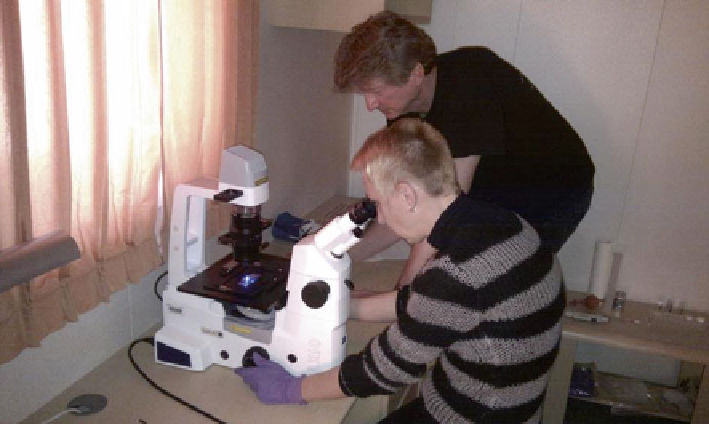Environmental Engineering Reference
In-Depth Information
Fig. 24
Onboard use of an epifl uorescence microscope
Discussion
Ballast water sampling may be conducted for various purposes: (a) to assess the
biology and chemistry of ballast water (scientifi c research); (b) to identify poten-
tially harmful or other organisms carried in ballast water (risk assessment); and,
(c) to assess compliance with BWM requirements (monitoring and enforcement)
which is in the focus of this chapter. Ballast water sampling is complex due to dif-
ferences in organisms' dimensions and behaviour, as well as because of differences
in ship construction including the availability of sampling points. These issues and
the purpose of the ballast water sampling study have infl uence on the sampling
method selection.
The sampling point is clearly related to the sampling purpose, e.g., indicative or
in detail, D-1 or D-2 standards compliance sampling. The in-line sampling point
will need to be installed on vessels according to the G2 and G8 Guidelines. However,
there are no detailed provisions for in-tank sampling points so that ballast water to
be sampled from a tank needs to be sampled via existing access points, i.e., man-
holes, sounding or air pipes. The availability of these sampling access points has
proven to be critical. Employment of sampling equipment, modifi ed for on board
use, and a fl exible approach are essentially needed to allow sampling via the differ-
ent access points.
New methods were developed and are currently further developing to ease
ballast water sampling on board ships including especially designed equipment for
in-tank sampling through sounding pipes. Sounding pipe sampling was achieved by
the use of a variety of methods including an air-driven well pump, hand pump, a

Search WWH ::

Custom Search